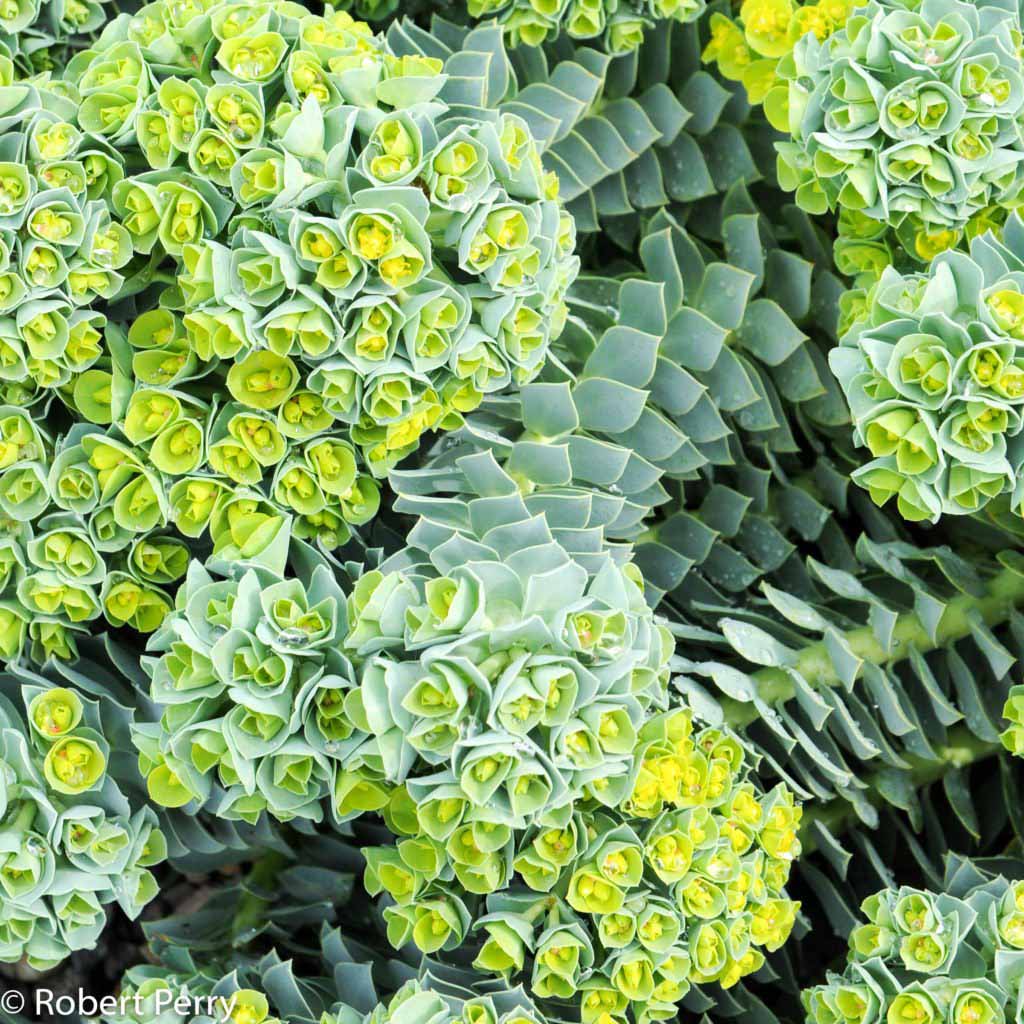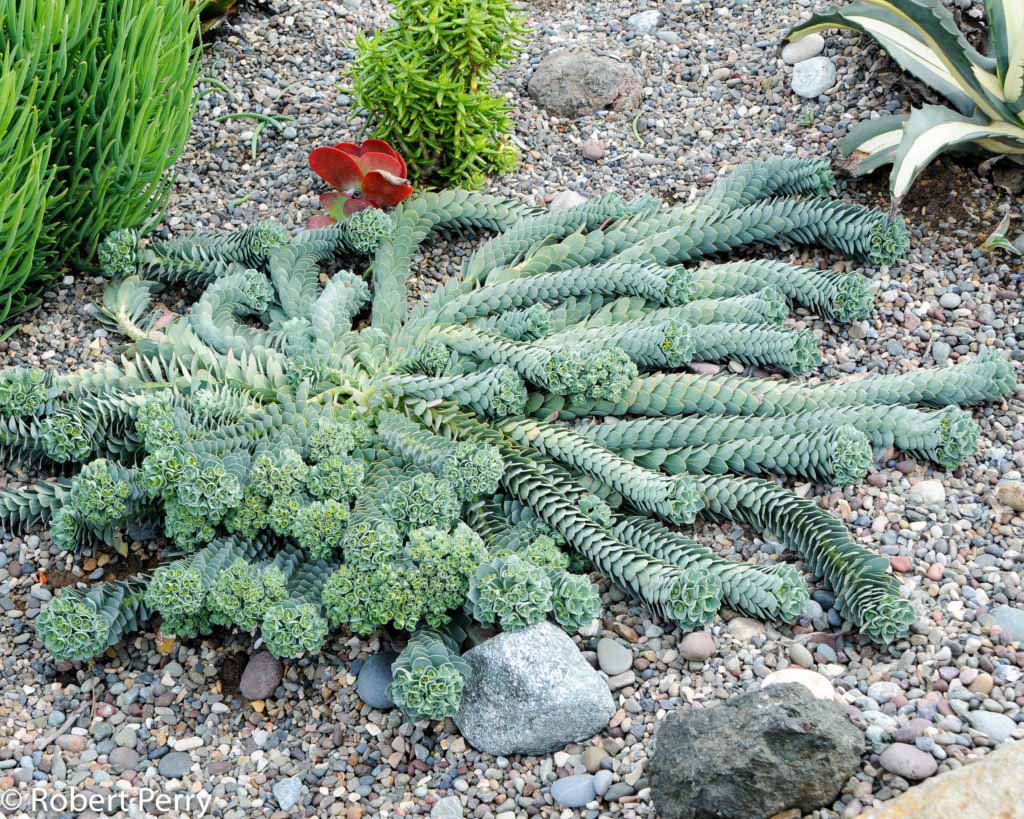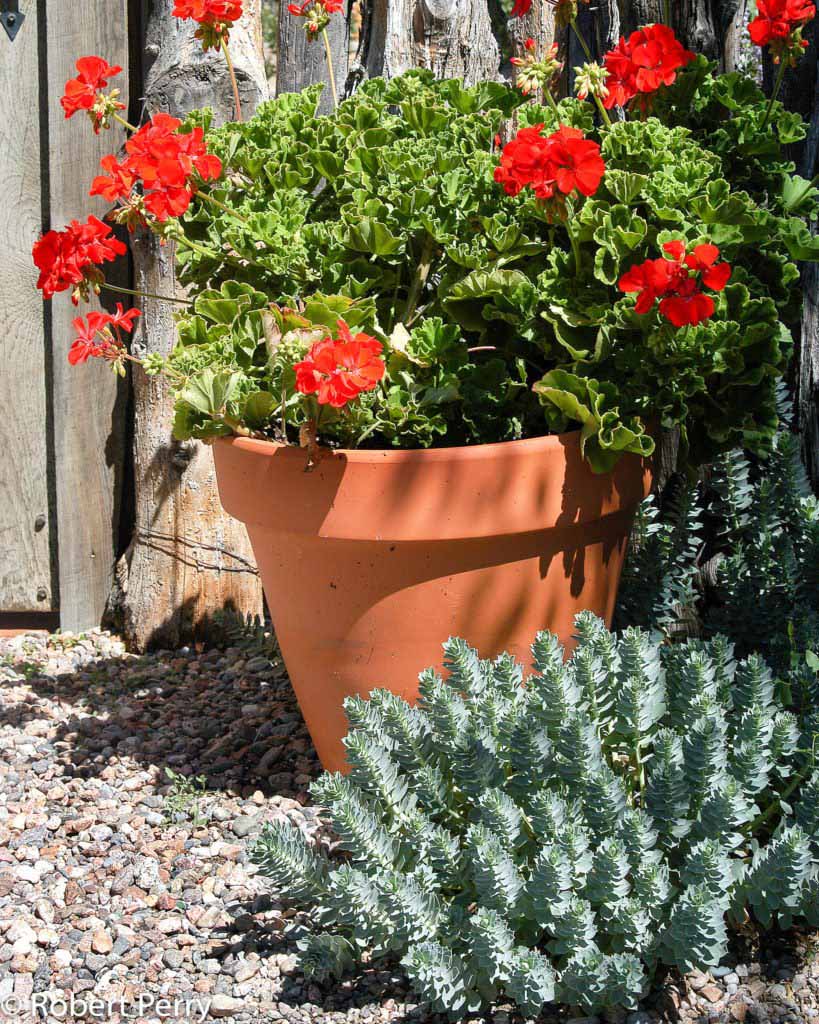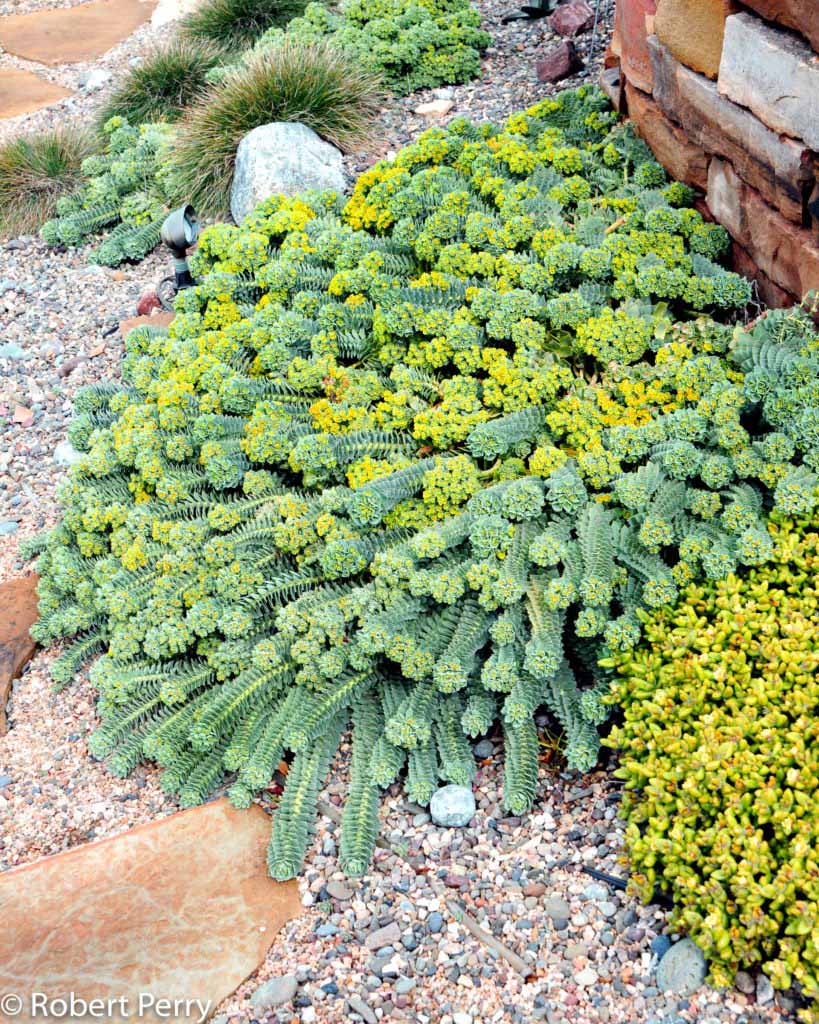Like other species of Euphorbia, the creeping spurge is well adapted to sun and low amounts of supplemental water. Care should be taken when removing old stems to avoid contact with the milky white sap that is highly caustic to skin as well as poisonous.
Creeping spurge
Euphorbia myrsinites
Description
Plant properties
Water needs
Maintenance
Commercial sites
Plant Type: Perennial
Foliage Character: Evergreen
Habit: Trailing, Rigid, Mounding, Dense, Compact
Growth Rate: Moderate
Foliage Color: Blue green
Flower Color: Yellow
Flower Season: Spring
Soil Adaptations: Well-draining soil, Rocky soil, Calcareous soil
Exposure Adaptations: Aridity, All day sun, Wind, Heat, Drought, Cold hardy
Function: Rock gardens, Residential spaces, Raised planters, Grouped, Foliage accent plant, Flowering accent plant, Container plant, Borders, Small spaces
Height: 12 in.
Width: 18 in.
Foliage Character: Evergreen
Habit: Trailing, Rigid, Mounding, Dense, Compact
Growth Rate: Moderate
Foliage Color: Blue green
Flower Color: Yellow
Flower Season: Spring
Soil Adaptations: Well-draining soil, Rocky soil, Calcareous soil
Exposure Adaptations: Aridity, All day sun, Wind, Heat, Drought, Cold hardy
Function: Rock gardens, Residential spaces, Raised planters, Grouped, Foliage accent plant, Flowering accent plant, Container plant, Borders, Small spaces
Height: 12 in.
Width: 18 in.
Watering Schedule: Low 2
For most situations, we recommend watering deeply every 2 weeks after establishment.
Learn how to apply this watering schedule to your landscape on our How to water waterwise and California native plants page.
Important Notes
- These are general guidelines. Always observe and adjust as necessary for your landscape.
- If it rains over 1” you will likely not need to water for at least another two weeks. Before watering again, check the soil. It should be significantly dry at least 4” below the soil surface before watering.
- To save water, in many cases you can go longer in between waterings during the winter, often up to 3-4 weeks between watering for well-established plants. Two weeks after watering, check the soil approximately 4” below the surface. If it is still significantly moist, you can wait longer before watering again.
- In most cases, if you have a “smart timer” or weather sensitive irrigation controller, you may use these features to save some water in in the fall and winter. If you are using automatic weather adjusting functions, continue to allow the timer to run every two weeks. It will adjust the number of minutes it runs to account for the cooler weather.
- It is important to group plants with the same water needs together in the landscape to avoid needing to over or under water plants when running your irrigation system.
Prune lightly as needed (D). When pruning any Euphorbia, always wear eye protection and gloves, and avoid contact with the highly irritating white sap. If it gets on you, wash it off immediately (S).
References
Sign Up For Free
To access all the features of this website, please create an account with us. Privileges include:
- Ability to print plant groups, lists and plant profiles
- Create your own plant groups
- Receive monthly updates by email
An online resource for you to learn about and choose the best plants for your inland Southern California landscape.
Promoting water conservation through education, stormwater capture, waterwise landscapes, and other initiatives.
We provide programs, services, and resources to serve audiences of all ages to cultivate a community-wide conservation ethic and build regional capacity for water resilience.



